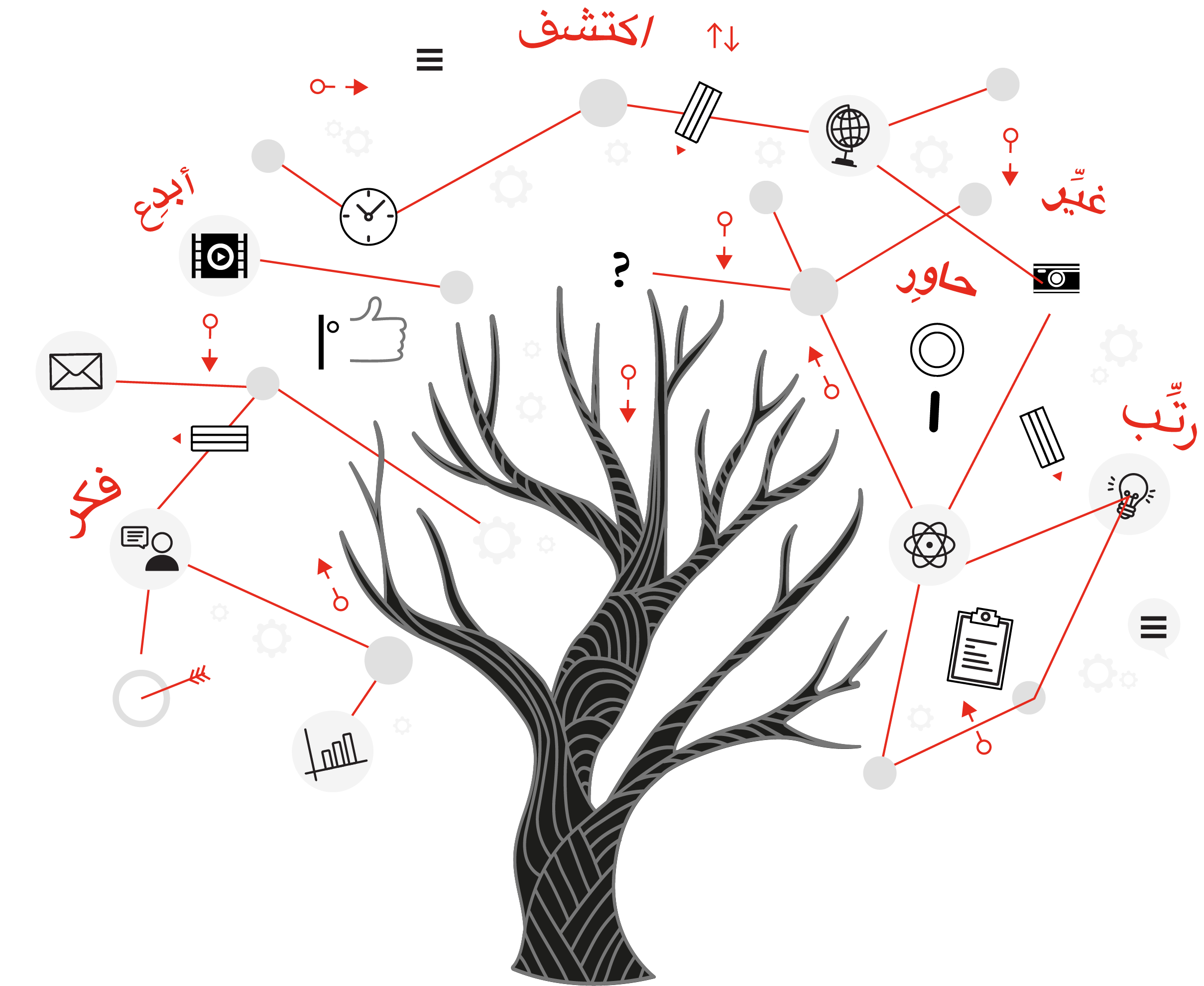9 eye-opening facts about antibiotic resistance — and 1 hopeful approach to overcoming it
Alvaro Dominguez
Imagine, for a moment, living in a world where strep throat wasn’t treatable. Where getting a cut or a blister could be life-threatening, even for people in countries with well-developed health systems.
While this may seem far-fetched, that’s exactly what could happen if our antibiotics lose their ability to treat bacterial infections. For years, scientists have been warning us about this scenario and telling us about the alarming rise in drug-resistant bacteria — but it doesn’t have to be our future.
Read on to learn 9 facts about antibiotics and how they were discovered, how bacteria learn to outmaneuver them, and how a bold idea (supported by The Audacious Project at TED) could help us address this problem.
So how did we get here?
1. We only have penicillin because of a scientist’s vacation and a policeman who grew roses
Penicillin, the first widely-used antibiotic, was discovered in 1928 and went on to revolutionize medicine. But we only have this drug — which treats strep throat, meningitis and more — thanks to a string of random events.
After his annual summer vacation, bacteriologist Alexander Fleming returned to his lab in London. When he was there, he realized that he had forgotten to place a petri dish in an incubator. As a result, an unusual mold was growing there. What’s more, the staph cells that he’d been studying and were clustered around it had actually died. Fleming called the mold “penicillin”, but then he struggled for more than a decade to isolate its active ingredient.
A group of biochemists at Oxford University — Howard Florey, Ernst Chain and Norman Heatley — picked up the charge. In 1940, they succeeded in purifying penicillin and tested it, first on mice and then on its first human subject: a policeman who’d contracted a life-threatening infection after being scratched by a rosebush in his garden.
At the same time, England was deep in the midst of World War II. According to the book The Mold in Dr. Florey’s Lab Coat, the group made a plan for what to do if Germany invaded — they rubbed penicillin spores into their lab coats so they could carry on their work should they have to flee.
That didn’t come to pass, but Florey and Heatley did have to solicit outside help to get penicillin mass-produced. They worked with both pharmaceutical companies and the US government to develop methods for growing penicillin at scale. By 1943, the US was supplying all the Allied forces with this miracle drug, which gave them a huge advantage in treating injuries.
2. Most of our existing antibiotics were found in the dirt — with the help of pilots and missionaries
Penicillin set off a golden age of antibiotic discovery, with scientists racing to identify substances with similar properties. At Rutgers University, agriculture student-turned-microbiologist Selman Waksman systematically tested an astonishing 10,000 soil samples over the course of his career. In 1943, he identified streptomycin, a broad-spectrum antibiotic effective against tuberculosis.
This work quickly got the attention of drug companies, who also set their eyes on searching soil. As public health journalist Maryn McKenna notes, Pfizer commissioned pilots, explorers and foreign correspondents to send back soil samples as they traveled; Eli Lilly, meanwhile, made a deal with the Christian and Missionary Alliance to have its members do the same. Bristol-Myers tapped its shareholders, asking them to mail in soil from wherever they went.
This tactic worked for decades, netting dozens of new antibiotics. But by the mid-1970s, researchers scouring soil samples found themselves discovering the same molecules over and over. Nothing new.
3. Discovery of new antibiotics has slowed, while bacteria are growing resistant to existing drugs
For the past 40 years, scientists have focused on methods like genomic sequencing to help identify new antibiotics. This process is slow and expensive — it costs roughly $1 billion per drug, says McKenna — and has yielded relatively little in the way of results.
At the same time, bacteria are learning to withstand our available drugs. They’re developing antibiotic resistance — sneaky strategies that prevent an antibiotic from damaging their cells. What’s more, bacteria appear to be getting more and more efficient at this. As McKenna explains in a TED Talk, vancomycin was first prescribed in 1972, and then vancomycin-resistant bacteria emerged in 1988. Imipenem came out in 1985, and resistance was noted in 1998. More recently, daptomycin came out in 2003, with resistance noticeable by 2004.
4. The very use of antibiotics increases the mutation rate of bacteria
Antibiotics are mutagens, which work by attacking a bacteria cell. If they don’t kill it outright, they trigger the cell to fight for survival. So the use of an antibiotic increases the probability of a bacteria cell mutating in a way that gains resistance.
Resistant cells are able to pass on new coding to their offspring with startling speed — bacteria birth a new generation every 20 minutes. Plus, cells are even able to hand off their resistance to other bacteria. As McKenna puts it in her TED Talk, “Bacteria can pass their DNA to each other like a traveler handing off a suitcase at an airport. Once we have encouraged that resistance into existence, there is no knowing where it will spread.”
Resistance can also accumulate. Some communities of cells now have resistance to multiple antibiotics, and these hard-to-kill bacteria are the “superbugs” that you’ve probably heard about.
5. Antibiotic resistance is a natural phenomenon, but overusing antibiotics makes the problem much worse
Given how swift bacteria are at building resistance, the best strategy for ensuring that antibiotics stay effective would be to use them sparingly and only when needed. But that isn’t what we’ve done.
In some countries, antibiotics are available without a prescription, and in Europe and North America, antibiotics are vastly overprescribed by physicians. Too many patients pressure practitioners for antibiotics, even for colds or viruses that can’t be cured by them. According to the US Center for Disease Control, 30 percent of antibiotic prescriptions written in the US — in doctors’ offices and hospitals — are unnecessary.
6. Antibiotic use in livestock and antibacterial soaps are also driving resistance
In the US, 70 percent of all antibiotics sold are used on farms to fight off infections in livestock and enhance their growth. Antibiotics are also used in the farming of fish and shrimp, as well as in the growing of fruits like apples, pears and citrus even though they’re not always necessary.
Meanwhile, consumers’ use of antibacterial soaps are on the rise. Then, with the COVID-19 pandemic, many people are using hand sanitizer gels and disinfecting wipes much more frequently. It’s the right thing to do while the virus is a threat — but in the long run, it could further stoke resistance.
7. The number of people dying from antibiotic-resistant diseases keep rising
According to a 2019 report from the World Health Organization, at least 700,000 people are already dying of drug-resistant diseases each year. That number could rise to 10 million annually by 2050, making antibiotic resistant infections more deadly than cancer. We could soon be living in a very different world, one where the medical advances of the last century are wiped away.
8. But there is good news: Artificial intelligence has helped identify the first new broad-spectrum antibiotic in decades
This story promised hope, and that’s where the work of the Collins Lab at MIT comes in. Led by synthetic biologist Jim Collins, the lab has the goal to speed up the process of discovering new antibiotics and replenish our antibiotic arsenal. They’re doing this by harnessing the power of machine learning to screen unprecedented numbers of molecules for antibiotic properties.
In a 2020 study, Collins’ team announced that they have identified a new, highly-potent antibiotic: halicin. Named for HAL 9000, the sentient computer in 2001: A Space Odyssey, it seems to have real superpowers. Halicin rapidly kills E. coli, M. tuberculosis and more, and it’s also effective against the antibiotic-resistant bacteria that cause sepsis and pneumonia.
Equally important, halicin doesn’t appear to trigger mutations like other antibiotics do — while E. coli can develop resistance to other antibiotics in a single day, it wasn’t able to develop resistance to halicin even after 30 days of exposure. While scientists have known about halicin for a while — it was tested as a treatment for diabetes years ago — no one suspected it had antibiotic properties. “It doesn’t look like the antibiotics we know, so it would have been all but impossible for humans to recognize it as an antibiotic,” says Collins.
Thanks to the support of The Audacious Project, the funding initiative housed at TED to catalyze ambitious ideas into action, the Collins Lab is looking to add to our antibiotic toolbox. Their mission is to identify seven new classes of antibiotics to tackle seven of the world’s deadliest bacterial pathogens over the next seven years.
The lab’s work begins by analyzing the antibacterial activity of 100,000 known molecules. From there, they’ll train a machine-learning model to predict — based on their chemical structure — whether the new molecules could kill bacteria. Somewhere in this process, they should find antibiotics perfectly suited to fight ultra-deadly bugs. Researchers can also use what the model learns about antibacterial properties to design entirely new molecules that could be synthesized and tested.
9. Even better: This method might also have an impact on COVID-19
As Collins shared in his TED talk, he and his team are training an AI platform to search for new antivirals that could treat COVID-19. At the same time, they’re looking to modify the BCG vaccine — currently used to prevent tuberculosis — to include COVID-19 antigens. Finally, they’re working to create a face mask that could continually test its wearer for COVID-19 as they breathe (wow!). They’ll do this by freeze-drying RNA sensors onto cloth.
One last thing: Combating antibiotic resistance isn’t just the work of people like the Collins Lab team. We can each do our part
Next time you’re sick, double-check with your doctor to make sure an antibiotic is really necessary. If it is, be sure to follow the prescription instructions so that you kill the bacteria rather than drive mutation. In your everyday life, you can look for antibiotic-free meat and buy plain soaps rather than antibacterial ones — they’re just as effective on virus particles.
Yes, it’s hard to think about facing another large-scale global health crisis in our lifetimes — but we have a chance to heed the warning this time.
Watch Jim Collins’s TED Talk here:

